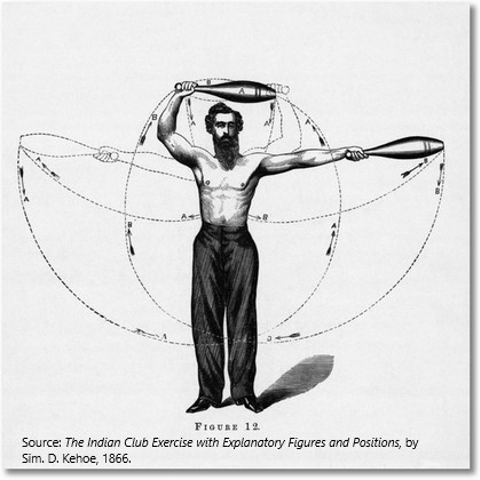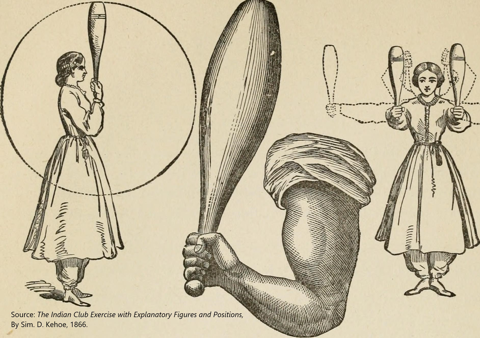This is one of several Indian clubs in the DCHS collection. Indian clubs are a type of exercise equipment that has been around for centuries. They originated on the Indian subcontinent and are used for resistance training to develop strength and mobility. The clubs were swung around in particular patterns and came in various weights.
Indian subcontinent and are used for resistance training to develop strength and mobility. The clubs were swung around in particular patterns and came in various weights.
In the mid-19th century, the British army in India brought Indian clubs back to England and they quickly gained popularity in the U.S. too. The British version had rounded bottoms, while the American clubs were flat-bottomed. Similar exercise clubs have been used in Iran and the Middle East, where they are known as Persian clubs.
After the Civil War, the fitness movement of the Victorian era made Indian clubs widely popular, and they were marketed to women and men alike for their reported benefits to both mind and body. Physical fitness was considered important for both mental and moral improvement, leading one to build character and righteousness. Indian clubs even made it to the Olympics in 1904 and 1932 as a gymnastics event.
 In the 21st century, Indian club use in America has seen a resurgence. They are touted by fitness professionals even today for building shoulder strength and flexibility, grip and forearm strength, core strength, coordination, and cardiovascular benefits.
In the 21st century, Indian club use in America has seen a resurgence. They are touted by fitness professionals even today for building shoulder strength and flexibility, grip and forearm strength, core strength, coordination, and cardiovascular benefits.
You can see several of DCHS’s Indian clubs in one of the second floor bedrooms of the Mathias Ham House.

